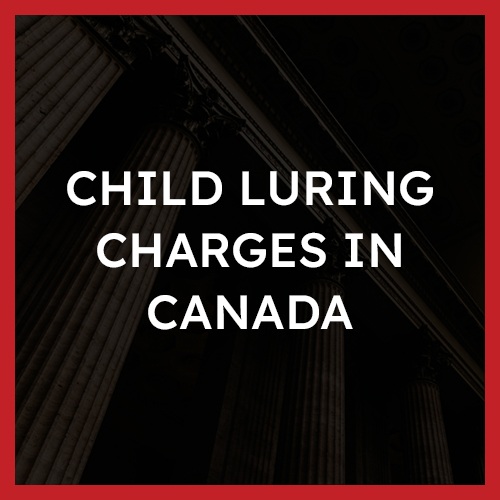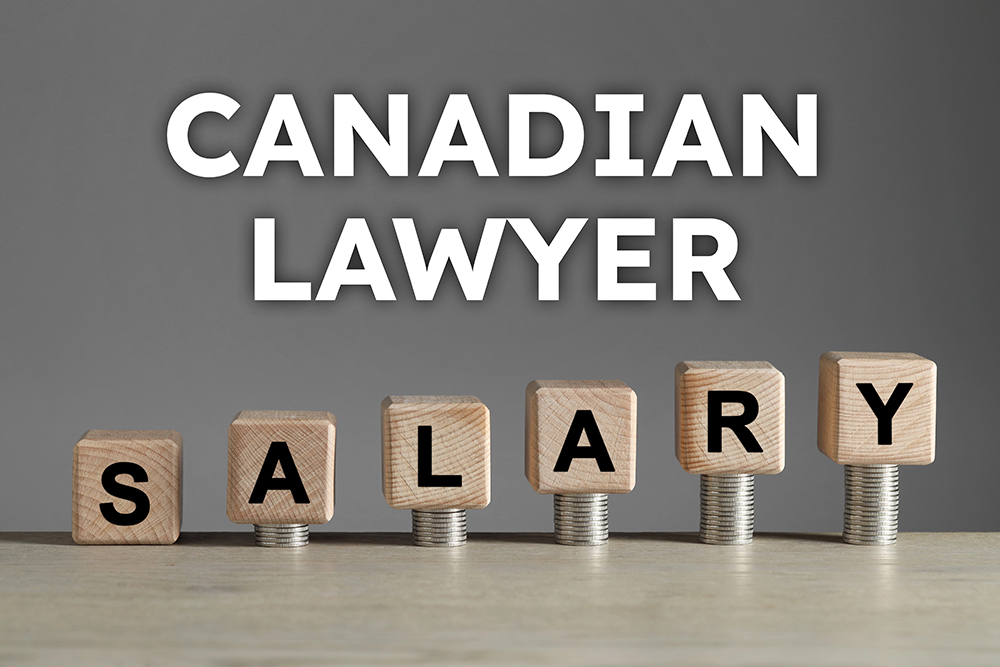Child Luring Laws in Canada
 Child luring is covered under s.172.1 of the Criminal Code.
Child luring is covered under s.172.1 of the Criminal Code.
You can be charged with child luring if you use the internet to communicate with someone who you know is not 18 years or older with the intent to commit sexual exploitation, incest, child pornography, or sexual assault.
The purpose of s.172.1 of the Criminal Code is to criminalize child luring to protect children, who are vulnerable members of society and are particularly vulnerable to exploitation by predators on the internet.
Child luring is a hybrid offence. This means that the Crown, depending on the specific facts and circumstances of your case, can choose to either proceed by incitement or summarily.
Examples
Some common examples of child luring may be the following:
- If you ask someone under the age of 18 to take a sexual picture and sent it to you online;
- If you make a fake profile and try to befriend someone under the age of 18;
- If you arrange to meet someone who you know is under the age of 18;
Defences
- Reasonable Steps were taken;
- Entrapment;
- Lack of intention; and
- Any applicable Charter defences
Punishments
Depending on whether the Crown elects to proceed either by indictment or summarily, this choice will impact the severity of the punishment that you are given.
The Criminal Code specifies the following penalties for a child luring conviction:
- Indictable: A minimum of one year in jail and up to 14 years in jail.
- Summary: A minimum of 90 days incarceration and up to two years less one day in jail.
Overview of the Offence
Under s.172.1 of the Criminal Code:
Every person commits an offence who, by a means of telecommunication, communicates with
(a) a person who is, or who the accused believes is, under the age of 18 years, for the purpose of facilitating the commission of an offence with respect to that person under subsection 153(1), section 155, 163.1, 170, 171 or 279.011 or subsection 279.02(2), 279.03(2), 286.1(2), 286.2(2) or 286.3(2);
(b) a person who is, or who the accused believes is, under the age of 16 years, for the purpose of facilitating the commission of an offence under section 151 or 152, subsection 160(3) or 173(2) or section 271, 272, 273 or 280 with respect to that person; or
(c) a person who is, or who the accused believes is, under the age of 14 years, for the purpose of facilitating the commission of an offence under section 281 with respect to that person.
In order for the Crown to secure a conviction of child luring they must prove, beyond a reasonable doubt, the actus reus and mens rea of the offence.
The Guilty Act (Actus Reus)
The actus reus of a child luring charge that the Crown must prove, beyond a reasonable doubt, to secure a conviction is that you:
- communicated with the complainant by means of telecommunications
The term ‘telecommunications’ as defined in s.35 of the Interpretation Act “means the emission, transmission or reception of signs, signals, writing, images, sounds or intelligence of any nature by any wire, cable, radio, optical or another electromagnetic system, or by any similar technical system.”
The Guilty Mind (Mens Rea)
The Mens Rea of a child luring charge that the Crown must prove, beyond a reasonable doubt, to secure a conviction is that you:
- intentionally communicated with the complainant;
- you knew, or at least believed, that the complainant was not 18 years of age or older; and
- you were communicating with the complainant for the purpose of facilitating a secondary offence.
The court in R v Legare, 2009 SCC 56 (CanLII) (“Legare”) indicated that intent is measured subjectively by the courts. The intent on the part of the accused must be present at the time that the communication is made. This means that the intent must be specific to the objective.
With respect to the secondary offence referred to in a child luring offence, depending on which subsection you are charged with, this may be the following:
- Sexual exploitation, s.153(1) of the Criminal Code ;
- Incest, s.155 of the Criminal Code;
- Child pornography, s.163.1 of the Criminal Code;
- Householder permitting sexual activity, s.171 of the Criminal Code;
- Trafficking in person under age 18, s.279.02(2) of the Criminal Code;
- Withholding or destroying documents of a trafficked person under the age of 18, s.279.03(2) of the Criminal Code;
- Obtaining sexual services from person under age 18, s.286.1(2) of the Criminal Code;
- Material benefit from sexual services of person under the age of 18, s.286.2(2) of the Criminal Code;
- Procuring a person under age 18, s.286.3(2) of the Criminal Code;
- Sexual interference, s.151 of the Criminal Code;
- Invitation to sexual touching, s.152 of the Criminal Code;
- Bestiality in presence of a child, s.160(3) of the Criminal Code;
- Indecent Act, Exposure, s.173(2) of the Criminal Code;
- Sexual Assault, s.271 of the Criminal Code;
- Sexual assault with a weapon or causing bodily harm, s.272 of the Criminal Code;
- Aggravated Sexual Assault, s.723 of the Criminal Code;
- Child abduction under 16 years, s.280 of the Criminal Code; or
- Abduction of person 14 years, s.281 of the Criminal Code.
In relation to the ‘purpose of facilitating an offence,’ the court in Legare further indicated that ‘facilitating’ for the purposes of child luring offences includes “helping to bring about and [make] easier or more probable” the commission of the offence. For example, this could include ‘luring’ or ‘grooming’ the complainant to commit or participate in the prohibited conduct, reducing the complainant’s inhibitions; or by encouraging an excessive interest in sexual matters that may have exploited the complainant’s curiosity, immaturity or precocious sexuality.
It is also important to note that although the heading of the offence refers to “luring”, this offence can be committed in circumstances that do not involve luring the complainant to engage in sexual activity. Rather, if your communication with the underage complainant was for the purpose of committing a child pornography offence it is irrelevant that you had no in-person contact with the complainant. Additionally, it is also irrelevant that you lacked a sexual purpose when you were engaged in the prohibited conduct with the intent to facilitate the designated offence. This was discussed in the case of R v McSween (2020), ONCA 343 (CanLII).
Child Luring Defences
How to Beat a Child Luring Charge
The availability and strength of any defence are highly dependent on the specific facts of your case.
However, some defences to a charge of child luring may include the following:
- Reasonable Steps were taken;
- Entrapment;
- Lack of intention; and
- Any applicable Charter defences
- Reasonable Steps
Under s.172.1(4) of the Criminal Code:
It is not a defence to a charge under paragraph (1)
(a) [child luring – under 18 years],
(b) [child luring – under 16 years] or
(c) [child luring – under 14 years] that the accused believed that the person referred to in that paragraph was at least eighteen years of age, sixteen years or fourteen years of age, as the case may be unless the accused took reasonable steps to ascertain the age of the person
This section bars an accused from raising a defence that they believed that the complainant was of legal age where they failed to take reasonable steps to ascertain the complainant’s age. However, as the case of R v Morrison, 2019 SCC 15 discussed this does not relieve the Crown of its ultimate burden of proving, beyond a reasonable doubt, that the accused believed that the complainant was underage. This means that if the court can only come to the conclusion, based on the evidence provided, that the accused was negligent or reckless in relation to the age of the complainant then the Crown cannot secure a conviction and you must be acquitted as it has not discharged its burden. What constitutes to “reasonable steps” is fairly contextual and fact-specific, however, if you are able to showcase that you did in fact take reasonable steps you cannot be convicted of a child luring offence.
Entrapment
If you were charged with child luring through an operation with a police officer acting as a young person online, under specific circumstances you may be able to use the defence of entrapment. Entrapment is where the police induce you or abet you to commit a crime that you were otherwise not involved with. In practice, a defence of entrapment is difficult to raise, however, if raised successfully you would be granted a stay of proceedings.
To successfully raise the defence of entrapment, you will have to demonstrate that:
- The police did not have reasonable suspicion to believe that you were already engaged in the alleged offence, but they provided you with an opportunity to commit the offence anyway;
- The police provide you with an opportunity to commit an offence without acting pursuant to a bona fide inquiry; or
- The police had a reasonable suspicion that you were engaged in the alleged offence, however, they went beyond providing you with a mere opportunity to commit the offence. Rather, they did something to induce you to commit the offence.
However, it is important to note that a defence of entrapment can only be raised after the Crown has proven all elements of the offence.
Lack of Intention
A conviction of a child luring offence requires that you possessed the requisite intention. If you are able to demonstrate that you did not possess the intention, the men’s rea element of the offence cannot be made out and the Crown will not be able to secure a conviction.
Charter Defences
The Charter sets out your rights and freedoms before and after your arrest. In the event that the police fail to abide by these rights, either deliberately or inadvertently, it could aid in your defence for a charge of child luring. If any of your Charter rights have been violated before or after your arrest, you may be able to have some or all of the evidence that the Crown is relying on to secure a conviction excluded under s.24(2) of the Charter.
Common Charter breaches include:
- Section 8- Right to be secure from search and seizure;
- Section 9- Right not to be arbitrarily detained;
- Section 10- Right to be informed of reasons for detention or arrest:
- Section 11- General: legal rights apply to those “charged with an offence”
- Section 12- Cruel and unusual treatment or punishment
Child Luring Punishment
The penalty you receive for a conviction of a child luring offence will be dependent on whether the crown elected to proceed summarily or by indictment and whether there are any aggravating or mitigating factors present. Nevertheless, the following penalties may be applicable:
s.172.1 – Indictment
If the Crown elects to proceed by indictment and you are convicted of a child luring offence, the minimum penalty you will receive is one year in jail, however, the maximum penalty would be 14 years in jail.
s.172.1 – Summary
If the Crown elects to proceed summarily and you are convicted of a child luring offence, the minimum penalty you will receive is 6 months in jail, however, you may receive a maximum penalty of up to two years less one day in jail.
Additionally, the following aggravating factors may increase the penalty that you receive for a conviction of a child luring offence:
- Age of the complainant
- sending explicit images to the complainant
- if communications were for a prolonged period of time
- attempted to arrange a meeting with the complainant
- meeting the complainant resulted in sexual assault or attempt
- offence included the creation of child pornography
Mitigating factors that may lessen the penalty you receive may be:
- you are a young offender
- your age is close to the complainant’s age
However, it is important to note that as seen in the case of R v Doxtator, 2013 ONCJ 139 (CanLII) it is not a mitigating factor that the victim the accused found luring was an undercover cop, as this in no way lessens the seriousness of the offence.
You also have available to you sentences that include custody and probation, and custody and fine. However, since child luring offences have mandatory minimum sentences associated with them, generally will not have available discharges, suspended sentences, stand-alone fines, or conditional sentences.
Additionally, since child luring offences are a primary designated offence, if you are convicted of a child luring offence you will also have to submit your DNA to a national DNA databank. This means that the police will have access to information about your DNA which may be used when the police conduct any future investigations. Furthermore, in accordance with the Sexual Offender Information Registration Act (SOIRA) if you are convicted of a child luring offence you will also be put on the registered sex offender list. This means that the government will be able to monitor you after your conviction by obtaining information such as where you live, work, volunteer, what kind of car you drive, and if you plan to leave the country for more than 7 days.
Frequently Asked Questions
What is child luring mean?
Child luring refers to an illegal act of an adult using technology to communicate with someone underage with the intent to commit a secondary offence against the child.
What type of offence is luring a child?
Child luring is a serious criminal offence in Canada which is covered under s.172.1 of the Criminal Code. It is a hybrid offence which means that the Crown, depending on the circumstances of your offence, can either proceed by indictment or summarily.
What is considered child luring in Canada?
Child luring is the act of using the Internet to communicate with a person that you know is under the age of 18 years for the purposes of committing a secondary offence.
Is Luring a crime in Canada?
Yes, child luring is a crime covered under s.172.1 of the Criminal Code. Child luring charges are serious charges in Canada which are investigated vigorously and prosecuted aggressively. If convicted of a child luring offence, you can go to jail for a minimum of one year and up to a maximum of 14 years in jail
Published Decisions
R. v. Legare, 2009 SCC 56 (CanLII), [2009] 3 SCR 551
In this case, the complainant met with the accused in an online public chatroom and pretended to be 17 years old. The complainant told the accused that she was 13 years old and upon the accused’s request gave him her phone number.
You can read the full decision here.
R. v. A.B., 2022 ONCA 83 (CanLII)
In this case, the accused was convicted of two counts of child luring and was sentenced to 41 months in prison. The accused appealed his sentence which was dismissed by the Ontario Court of Appeal.
You can read the full decision here.
R. v Karadics, 2022 ABQB 121 (CanLII)
In this case, an undercover officer messaged back and forth with the accused and told the accused that they were 15 years old. The Accused was convicted of child luring but brought an application for a stay of proceedings based on entrapment. The court indicated that the accused was not entrapped, and the conviction was entered.
You can read the full decision here.
About The Author







